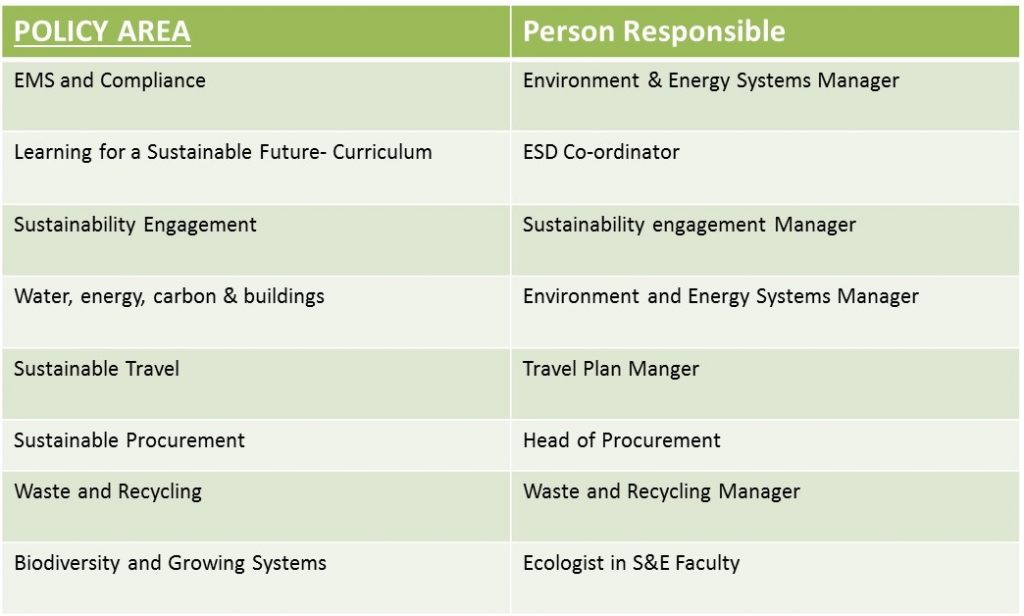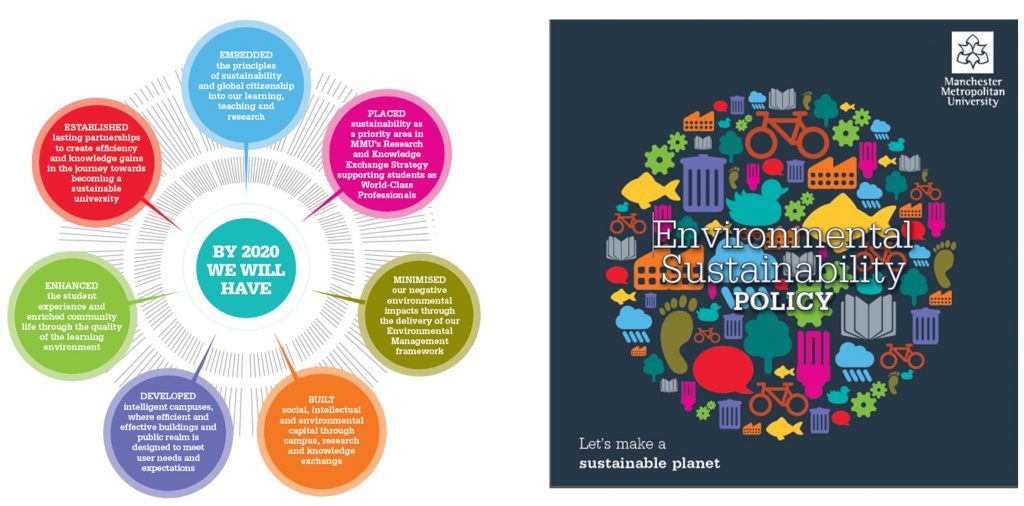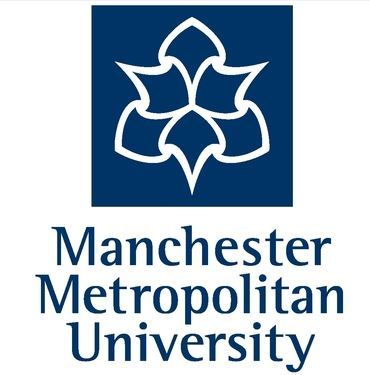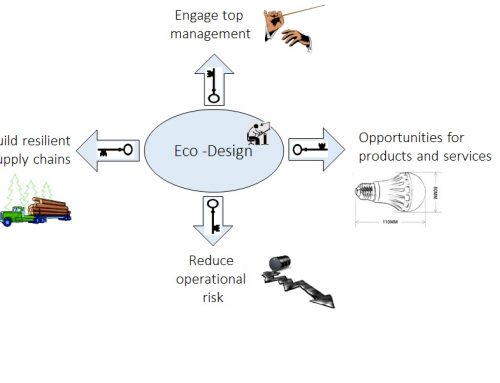Marek Bidwell interviews Helena Tinker from M anchester Metropolitan University about her experience making the transition to ISO 14001:2015.
anchester Metropolitan University about her experience making the transition to ISO 14001:2015.
Helena Tinker is the Environment and Energy Systems Manager at Manchester Metropolitan University. She is responsible for the University’s Environmental Management System, Policy and Strategy implementation.
Manchester Metropolitan is one of the largest campus-based universities in the UK, with a total student population of approximately 38,000 and approximately 4,000 staff. The University has pursued an environmental sustainability agenda for a number of years and was ranked as one of the top three greenest UK universities by The People and Planet Green League in 2015 and the greenest university in 2013.
Manchester Metropolitan has implemented an environmental management system using the EcoCampus framework. They achieved bronze in 2012, silver in 2014 and gold in 2015. In early 2016, they were assessed against the final stage of EcoCampus (that includes the check and review stages of the standard) achieving EcoCampus Platinum and ISO 14001:2015 simultaneously.
In May this year, Helena presented a summary of the university’s journey towards ISO 14001:2015 at the annual conference of The Environmental Association for Universities and Colleges.
Give me a flavour of how you prepared for the 14001 transition?
When we were working towards gold EcoCampus in 2015, I reviewed early drafts of the ISO 14001:2015 standard to ensure the systems we developed incorporated the new requirements, such as leadership commitment and context analysis, and then tweaked the systems when the final version was published.
I embedded the EMS across the organisation, building competency in other members of staff.
The system is split into 12 areas that link to our environmental policy and a member of staff is accountable for achieving the objectives and targets, defining roles and responsibility and ensuring legal compliance within their area.
I also integrated the EMS into other business processes across the organisation.

Environmental roles and responsibilities at Manchester Metropolitan University
What were the most helpful sources of information?
The ISO 14001:2015 consultation workshops run by Martin Baxter from IEMA were useful as they gave an early insight to the changes being proposed. Alex Hobbins from EcoCampus was also helpful; we worked together to understand the impact of the changes on our system.
What were the strengths of your existing system?
Manchester Metropolitan has been active in environmental sustainability for a number of years, so already had some excellent and challenging environmental programmes in place. The Environment Team were well resourced and staff across the university were already engaged in environmental issues via the NUS Green Impact Programme, which we had been running for a number of years. The University already had an Environmental Strategy and Policy with commitment from senior management. We reviewed and updated both documents to meet the requirements of 14001:2015. Further resources were also made available to deliver new environmental objectives and targets.

Environmental Vision, and Policy for 2020 at Manchester Metropolitan University
In early 2014, the university developed an objective to embed sustainability into the curriculum, and recruited a new member of staff to manage this work programme. This helped the University maintain our position in the People and Planet green/university league because there was greater emphasis on ‘education for sustainable development’ in the assessment criteria.
We were already delivering an excellent waste and recycling service with challenging reuse and recycling targets, but a full review of our waste streams and environmental obligations was required. We also formalised our systems and procedures to maintain compliance and increased our waste auditing activities.
What were the main changes you needed to make?
The clause/requirement we had not addressed was ‘context analysis’. To meet this requirement, I delivered a number of workshops with the eight environmental policy managers and their teams in 2015. We undertook a PESTLE analysis of internal and external issues that could affect the university achieving its environmental objectives. We then identified the associated, risks and opportunities and proposed actions to address the issues arising. It was a useful exercise as it helped us identify future challenges and our management response. I selected key risks and opportunities and our proposed actions and presented them to our Environmental Strategy Board for discussion, input and approval.
Did you find the process of identifying risks and opportunities useful, having already identified your environmental aspects?
We found it more useful than the aspects assessment exercise, especially for the travel and waste policy areas; it helped teams think about how their activities are influenced by internal and external factors. It encouraged them to think more holistically and manage our risks and opportunities.
Examples of the external issues identified included changes and developments in government policy and our continued membership of the European Union, and ongoing improvement works on the Oxford Road Corridor in Manchester creating i enhanced bus and cycle infrastructure. It was useful to discuss the actions required to address the risks and opportunities associated with them and ensure they were incorporated into our action plans.
How did you tackle the new requirements for life-cycle thinking?
We already included procurement activities in the scope of our environmental management system as we were working towards level 3 in the Government’s flexible procurement framework.
I worked with the procurement team to identify key products and services we purchased that could potentially have a high environmental or social impact. I then determined the environmental impacts associated with each lifecycle stage: Transport, Processing, Manufacture and Construction, Distribution, Use and Disposal; considered if we had control or influence at each stage; and then identified at what current actions we were working on, and future potential actions.
For example, we developed Environmental Design Principles for our building and refurbishment projects, to ensure environmental issues are considered in the design process.
Tell me more about how you worked with the University to embed sustainability into teaching and research?
Embedding environmental and social sustainability issues into the curriculum is one of our largest positive impacts, alongside offering extra-curricular activities associated with sustainability.
The University appointed an Education for Sustainable Development Coordinator who provides support and CPD opportunities to academic staff to embed sustainability into their curriculum.
For example, the Faculty of Business and Law’s mission statement includes: To develop socially and environmentally responsible ‘early career professionals’ for successful careers in management and the professions. Dr Jack Christian from Accounting, Finance and Economics has delivered ethics and sustainability lectures across the Business School for the last five years.
The University was also a pilot for the new Responsible Futures accreditation mark, an initiative driven by the National Union of Students to engage students in the sustainability agenda. The University’s involvement in the scheme helped contribute to the successful certification to ISO 14001:2015.
Did you need to make changes to your processes associated with communication with interested parties?
No, we documented current communication practices. We listed our interested parties, confirmed their needs and expectations, in terms of environmental communication and identified if it was a compliance issues.
We already published our environmental performance on an annual basis via our annual environmental sustainability report. This piece of work is led by our Sustainability Engagement Manager with input from key stakeholders across the university. Our most recent statement is available on our website.
How did the external assessment go?
Two auditors from NQA undertook the assessment, over three days.
They undertook a number of site visits and interviewed approximately 40 people. They interviewed our Director of Services, who is the Chair of the University’s Environmental Strategy Board. They spent about an hour asking about the Boards role its structure and how our environmental objectives link to University strategy, and future risks and opportunities for the University.
In large organisations, it is impossible for auditors to talk to everyone involved in the EMS, but they said they would have loved to spend more time looking at particular areas in more detail. We have therefore agreed to spend a greater amount of time on issues such as procurement, waste management and sustainability in the curriculum, in our next surveillance visit.
What were the audit findings?
We had four minor nonconformities and a number of observations. One was associated with the new requirements of ISO 14001:2015.
It was linked to our evaluation of legal compliance. We use an environmental legislation update database called ELUS to help create a register of legislation. It was recommended that we link our legal internal audits of compliance to our register of legislation. This would provide evidence of our regular evaluation of compliance.
Do you perceive that there were any benefits for your organisation or the environment from the changes to ISO 14001?
The top benefits are: senior management commitment helps ensure we have sufficient resources in place to manage and improve our environmental performance, and the new monitoring and measurement requirements ensure robust KPIs are in place to review performance and continually improve Undertaking a PESTEL analysis helped identify future risks and opportunities and ensured we had plans in place to address them.
What advice would you give to others on making the transition to ISO 14001:2015?
Always keep it simple; make sure that you have good leadership and commitment; embed the EMS into your organisation; and ensure that people are clear about their roles and responsibilities because you are not going to be able to do it all on your own
What is the next step for your organisation’s EMS?
We would like to improve our internal auditing system taking on board the comments from the external auditors, ensuring we document the root cause of any non-conformance raised. We would also like to expand our programme on climate change adaptation and business continuity, working with the Head of Business Continuity. We will continually review our energy, carbon and travel performance and continue to deliver on our challenging action plans to meet our targets.
Using our experience, the university has established an advisory service to support other organisations to implement ISO 14001:2015
Marek Bidwell is Director of Bidwell Management Systems, a Chartered Environmentalist and visiting lecturer in Environmental Management at Newcastle University. Marek has led the design, development and implementation of environmental management systems at a plethora of businesses across the UK. He is the author of a series of articles in ‘The Environmentalist’ on the challenges of adapting management systems to the new standard, and the author of ‘Making the transition to ISO 14001:2015’; he was the facilitator for the practitioner-led ISO 14001:2015 Road Test Group.
This is the fourth in a series of articles entitled ‘ISO 14001:2015 – Lessons from the Early Adopters’. Click here for other interviews in the series.


You must be logged in to post a comment.